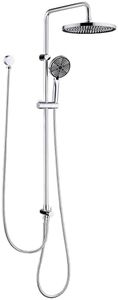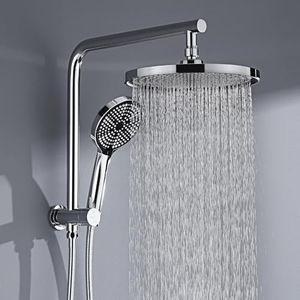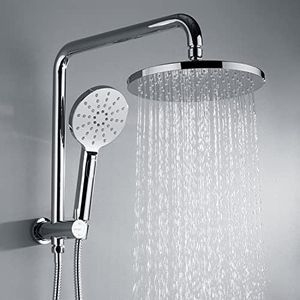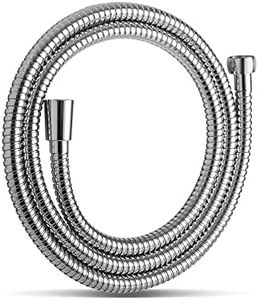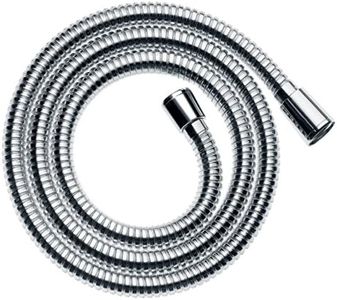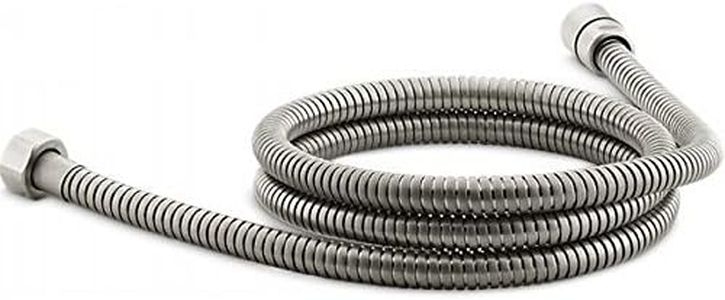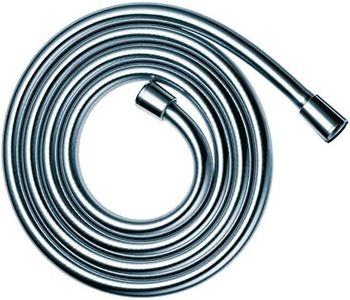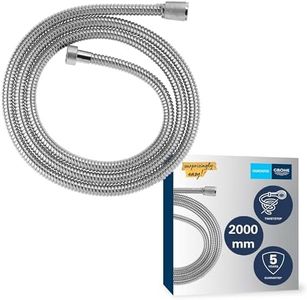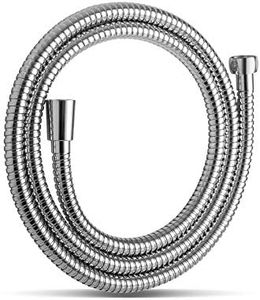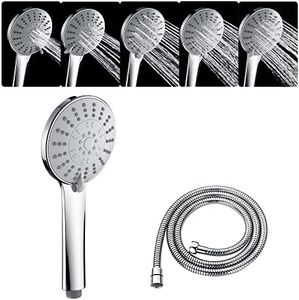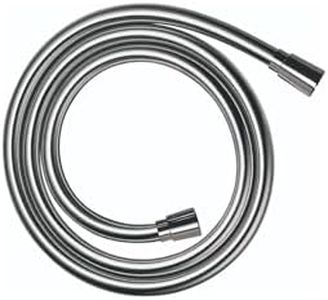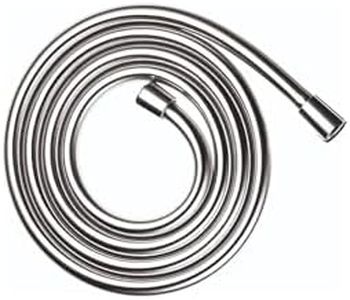We Use CookiesWe use cookies to enhance the security, performance,
functionality and for analytical and promotional activities. By continuing to browse this site you
are agreeing to our privacy policy
10 Best Shower Hoses
From leading brands and best sellers available on the web.By clicking on a link to a third party's website, log data is shared with that third party.
Buying Guide for the Best Shower Hoses
Choosing a shower hose might seem simple at first, but getting the right one can make your shower experience much more comfortable and hassle-free. To find the ideal hose for your needs, consider the main features that affect durability, flexibility, ease of installation, and overall use.LengthLength refers to how long the hose is from end to end. This is important because the right length ensures comfort while showering—too short and you might struggle to move freely, too long and it can tangle or make a mess. Common segments include short hoses around 1.25 meters, standard hoses about 1.5-1.6 meters, and extra-long hoses reaching up to 2 meters or more. Pick a length that fits your shower space and your personal preferences. If your shower head is mounted high or needs to reach a bathtub, longer is better; for smaller or confined showers, shorter can be neater.
MaterialMaterial determines the hose’s durability, flexibility, and appearance. Shower hoses are typically made of plastic, stainless steel, or sometimes brass. Plastic hoses are lightweight and less expensive, but may be less durable over time. Metal hoses, often stainless steel, are tougher, more flexible, and tend to last longer, but may weigh a bit more. There are also double-lock or reinforced varieties for extra strength. Choose a material that matches your priorities—opt for metal if you want durability and a premium look, or go plastic if you prefer something lightweight and are less concerned about longevity.
FlexibilityFlexibility refers to how easily the hose bends and moves. This quality makes showering more comfortable, but too much flexibility can sometimes mean the hose kinks or tangles easily. You’ll find very stiff hoses that are harder to move and super-flexible ones that swing freely. For most users, a balanced level of flexibility is ideal—easy to move and adjust, but sturdy enough to avoid knots. Consider how often you move the hose or need it to stretch, and pick according to your comfort.
Connector SizeConnector size is about the diameter of the ends that attach to your shower head and water supply. Most hoses use the standard 1/2-inch fitting, which fits the majority of showers worldwide. However, it’s always wise to check your setup before buying. If you have unique fittings, make sure to match them. Picking the right connector size ensures a leak-free, secure installation, and avoids frustration during setup.
Anti-Kink DesignAnti-kink features prevent the hose from twisting and blocking the water flow. This can include a special internal shape or an extra flexible outer cover. Some hoses advertise themselves as 'kink-free' or have a spiral construction to help. If you’ve experienced water stopping due to twists or if children or elderly users will use the shower, this feature can make a big difference. Consider how often your previous hoses have kinked to decide how important this is for you.
Ease of Cleaning/FinishEase of cleaning depends on the surface finish of the hose. Chrome and smooth metal finishes resist limescale and are easier to wipe clean, while textured plastics may show water spots and grime more quickly. If you live in a hard water area or value a shiny look with minimal effort, choose a hose with a smooth, polished finish that resists buildup and can be wiped off easily.
